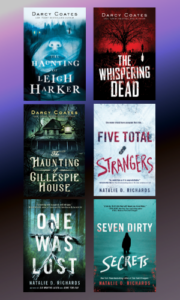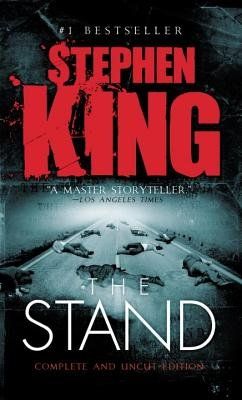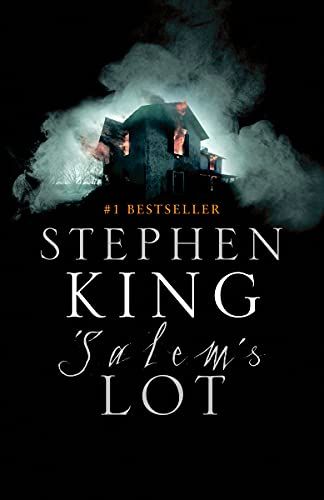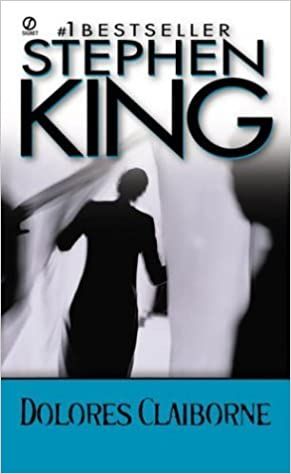Bestselling authors Natalie D. Richards and Darcy Coates bring us stories that chill us to the bone and keep us up all night reading—haunting reads perfect for Halloween! A hitched ride home in a snowstorm turns sinister when one of the passengers is plotting for the ride to end in disaster in New York Times bestseller Five Total Strangers. From USA Today bestselling gothic horror author Darcy Coates comes The Haunting of Leigh Harker, a chilling story of a quiet house on a forgotten suburban lane that hides a deadly secret… My story of how I discovered Stephen King begins with my brothers trying to scare me with this Indian horror show called Woh, which translates to It in English. Not being aware of any of the origins of the show, all I remember is being deathly afraid of that show, and the fact that the mere mention of a clown would have me escaping the premises. It wasn’t until I turned 13 and saw the two-part series of It that I realized what I had been looking at all along. I was still too young to understand all that was going on in the show, but I remember being enamored with The Losers Club. This time I held my ground even though the slightest of sweat trickled down my back and I hid my face in a pillow multiple times. This was when my dad, not a reader of books, told me that this was actually based on a book by Stephen King, which he had read and really enjoyed. The fact that my dad had read a book in itself was enough to pique my interest. I was still too daunted by the prospect of reading 1000 pages about a clown, so I decided to start slow. I stumbled upon Salem’s Lot with its iconic cover at my school library and began reading. I spent the next three days reading the book in its entirety, and the next three weeks refusing to sleep by myself. The way that King connected so many storylines while keeping the momentum of the story alive blew my mind. I then went on to read many of his works well into the present day. But I always find myself wondering about what it was that has made his works so appealing, that I, a timid 13-year-old, would stay up all night with his tales. Here’s what I came up with.
Simplicity of Writing
If you ever start reading a work by Stephen King, you will notice that his writing just flows. How else do you think he gets away with writing 1000-page novels on the regular? I think that this is a large part of his appeal for children too. During a time where kids are looking to move away from Enid Blyton, authors like Jane Austen and Charles Dickens can seem long-winded and unapproachable, whereas a Stephen King book serves as the perfect transition, not to mention his books are everywhere. When you read The Stand, which is probably one of his largest books, it starts off with the simplest of dialogues, a man calling out, “Sally, Sally wake up.” The fact that a virus brings the world to its complete end, and the forces of good and evil to an upfront battle between the pages, is all told in the simplest of sentences, the most vivid of images.
Storytelling
King is often accused of having no plot structure in mind while writing, in fact, this is something he himself has admitted to. But this is exactly what makes him the ideal storyteller. While as adults, we have to make time for stories, want them to be told to us in the shortest and fastest way, children live for details. They soak them all in. That is why I think so many kids find themselves captivated by his books like It. The story is set in the small town of Derry, Maine. After 27 years, it seems kids from all around Derry keep disappearing, but no one tries to do anything about it. Until it happens again and a group of kids who call themselves The Losers decide to do something about it. This story goes on for 1,181 pages, capturing the lives of these kids from adolescence through adulthood, and doesn’t spare any detail. I mean, any. When you are a kid you usually start a book to get lost in, and King’s works do just that.
Relatable Characters
A large number of Stephen King’s books feature characters that are younger children. He writes not only their insecurities and vulnerabilities but also shows them performing unique feats of courage. When you are a kid, no matter how many times someone tells you the futility of the exercise, all you want to do is be treated like an adult, to be told that there is nothing you can’t do. He makes you believe that if a clown went rampant in your town, you’d be brave enough to do something about it. In Salem’s Lot, a successful author returns to his hometown to work through the traumas from his childhood. We slowly trace back to that one traumatic moment that he keeps repeating in his head, and I often relive that scene in my head. In that one moment, King captures the feel of what it’s like to be scared as a kid and not know how to process what has scared you, so authentically that it is almost comforting. And how could we forget about Carrie White? The Carrie who till this day is both the comfort and fear of any kid who doesn’t fit in. Carrie has a lot against her, she doesn’t fit in, her mother has strict rules, and oh and she has the power to move objects with her mind. Her story is heartbreaking, but also serves up a moment of sweet justice at the end which I think even adults will relish.
A Good Old-Fashioned Scare
I feel the final reason kids love Stephen King so much is that he offers a good old scare. Who doesn’t love a good old-fashioned adrenaline rush? Especially when you are a kid and your attention span expires every 20 minutes. That’s what Stephen King’s books ultimately are: they are scary. His elements in most circumstances also come from daily life objects terrorizing us. He hasn’t forgiven anything that exists in our daily lives; not our car in Christine, not our pets, both in Cujo and Pet Sematary, and ultimately not even our sewer systems in It.
Reading Stephen King As an Adult
Now, as a so-called adult when I look back at a lot of what I have read and hope to read, a large number of King’s works act as a social commentary of the class system he grew up in. In his memoir On Writing, he talks about his financial struggles especially when it comes to being able to afford healthcare in America. It is this insecurity that permeates all of the characters’ lives. One in particular that stands out to me is Dolores Claiborne. This story starts with Dolores being interrogated for a murder she may or may not have committed. What we walk through then is a story of a mother trying to do the best for her kids and herself, with the cards she’s been dealt. This book is one of my absolute favorites as an adult because it talks about the real horrors that haunt adults. His stories also have a level of emotional depth to them, which I now as an adult realize is never acknowledged. In his works like Bag of Bones, we witness our characters work through their grief in a way that is raw and honest and leaves its mark on the reader. Our main character’s grief over finding himself suddenly widowed is something I often think about in moments where I feel inclined to think about the temporality of life. In The Shining, we witness the debilitating battle with addiction that the patriarch of the family goes through. While the movie adaptation flashes by, there are complete passages in the book where Jack talks about his desire, his need to take a drink, which, as someone who has witnessed a loved one’s battle with addiction, stirs the deepest of sympathy in me. I think the stark difference between reading his works as an adult and a kid is the idea of the grey that exists between our binary ideas of good and evil. How each villain in his book is battling something of their own no matter how foreign it may seem (here’s looking at you, Pennywise). While a lot of his writing is criticized and acclaimed in equal parts, he lays bare his process in On Writing where he gives some very practical tips about the craft of writing but also talks about his own process. The one thing that always stands out to me from that memoir is his claim that to be writing you always need to be reading. That’s all there is to it. You read and you write and then you do it all over again. He makes it look so simple, doesn’t he? Write on, Mr. King. If you like me have read most of Stephen King’s works and want more authors like him, check out this list.



